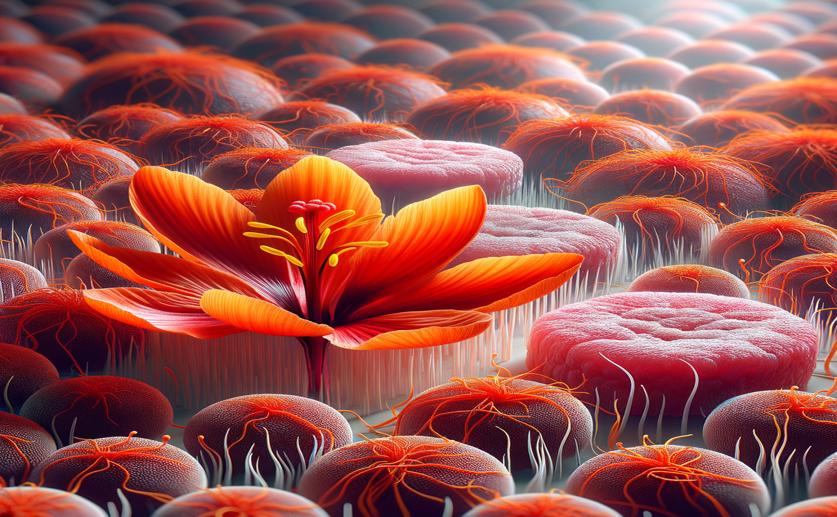
Natural Compounds from Saffron Petals Reduce Oxidative Damage in Skin Cells
Jenn Hoskins
19th September, 2024

Image Source: Natural Science News, 2024
Key Findings
- Researchers from Zhejiang University of Science and Technology found that saffron petals, usually discarded as waste, contain high levels of beneficial flavonoids like quercetin and kaempferol
- Quercetin and kaempferol from saffron petals significantly increased antioxidant capacity and enzyme activity in skin cells, protecting them from oxidative stress
- Quercetin was more effective than kaempferol in boosting antioxidant defenses by regulating a key cellular pathway, suggesting its potential to prevent oxidative damage
References
Main Study
1) Quercetin and kaempferol from saffron petals alleviated hydrogen peroxide-induced oxidative damage in B16 cells.
Published 17th September, 2024
https://doi.org/10.1002/jsfa.13887
Related Studies
2) Potential Nutraceutical Benefits of In Vivo Grown Saffron (Crocus sativus L.) As Analgesic, Anti-inflammatory, Anticoagulant, and Antidepressant in Mice.
3) Antimicrobial Activity and Chemical Characterization of a Non-Polar Extract of Saffron Stamens in Food Matrix.
4) Novel Insight into Utilization of Flavonoid Glycosides and Biological Properties of Saffron (Crocus sativus L.) Flower Byproducts.



 14th September, 2024 | Jim Crocker
14th September, 2024 | Jim Crocker